SUMMARY
This is AI generated summarization, which may have errors. For context, always refer to the full article.
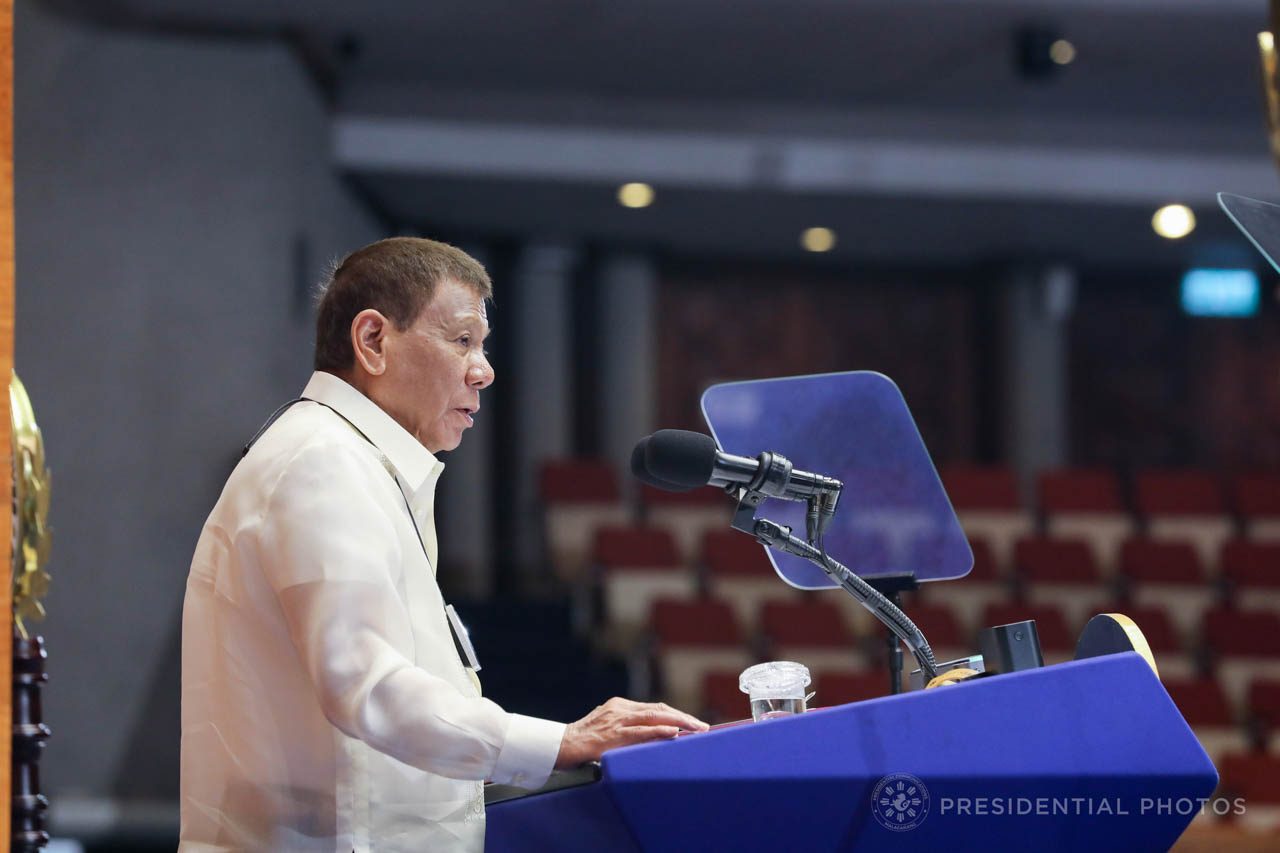
On Monday, July 26, Philippine President Rodrigo Duterte will deliver his final State of the Nation Address (SONA).
It will also be the last SONA before the 2022 national elections, when Filipinos will elect his successor. (Read all our stories about Duterte’s final year in power here.)
The yearly speech, when the Chief Executive typically banners accomplishments of his administration in the past years and gives directions to Congress on his priorities for the coming year, is a much-awaited event.
In his past five years as president, Duterte has changed the SONA – with his atypical use of curse words and colorful threats at critics and his tendency to go off-script.
In the middle of Duterte’s term, his Cabinet even conceptualized “pre-SONA fora,” where Cabinet members explain the administration’s gains in specific sectors, so that Duterte doesn’t have to do so in the SONA itself.
Here’s a comparison of all of Duterte’s SONAs, the patterns we’ve seen emerge, and the changes they’ve gone through:
Duration: Usually close to two hours
His longest SONA to date was his second one, in 2017, which lasted two hours. His shortest so far was his third one, in 2018, which he kept at 50 minutes. The 2020 SONA was an hour and 40 minutes long.
Many off-script moments
A Duterte SONA would not be a Duterte SONA without the ad-libs. But there was one SONA, his 2018 one, that had fewer extemporaneous remarks. It was also the shortest of the bunch.
Some of his memorable off-the-cuff remarks was when he commented on muted applause from his audience in his 2016 SONA, after he called for the passage of a tax reform measure, and then again in 2020, when he noticed lawmakers weren’t clapping at his push for death penalty.
Other asides and jokes Duterte had no qualms making in his SONAs include a sexist anecdote on his “girlfriend” who got “smelly” when there was a water shortage in Davao City, “presidential mice” that resided in Malacañang, his theories about God and spirituality, and an anecdote about Environment Secretary Roy Cimatu oggling bikini-clad tourists in Boracay.
Curse count
And while Duterte is known for studding his public remarks with bad words, he managed two SONAs devoid of curses – in 2016 and in 2018.
His most foul-mouthed SONA was his second, in 2017, which contained 25 expletives. His 2019 SONA had seven expletives, while his 2020 SONA had four bad words.
Constant topics
The topics that have been mentioned in every SONA are the drug war, his arguments against accusations of human rights abuses, his call for the death penalty, his call for a national land use law, overseas Filipino workers, tax reform, and infrastructure.
Dropped advocacies
In his most recent SONAs, Duterte has tellingly left out mention of his home region Mindanao and Marawi rehabilitation, his push for federalism, and his promise to end contractualization – topics which he had mentioned in his first few SONAs.
Evolution of issues
In his first SONA, Duterte announced a landmark unilateral ceasefire with the New People’s Army, the armed wing of the Communist Party of the Philippines, to make way for peace talks. In stark contrast, his last two SONAs never mentioned the CPP by name but instead highlighted controversial initiatives like the National Task Force to End Local Communist Armed Conflict and the Barangay Development Program.
Several bills he’s lobbied for in his SONAs managed to get passed, and he has consistently thanked lawmakers for them in succeeding SONAs. These include the universal health care law, tax reform measures like the TRAIN and CREATE laws, Coconut Levy Trust Fund law, and the rice tarrification law.
Attacks on individuals, groups, institutions
Duterte used his SONAs to criticize, insult, or attack critics. His first SONA did not name any specific person, but targeted institutions, like the Catholic Church and media.
He got more specific in his other SONAs, naming detained Senator Leila de Lima, the United States, former US president Barack Obama, the United Nations, Rappler, ABS-CBN, and Senate Minority Leader Franklin Drilon.
But, like other presidents, notably his predecessor Benigno Aquino III, Duterte also used his SONA to reprimand government offices he felt were not performing: the Land Bank of the Philippines, Land Transportation Office, Social Security System, Bureau of Internal Revenue, Land Registration Authority, and Pag-IBIG.
First hybrid SONAs, pandemic SONAs
Duterte is the first Philippine chief executive to deliver his SONA in the midst of a global pandemic. His SONA on July 26, 2021, will be the second. Because of the health crisis, his last two SONAs will be in hybrid format – only a small group of officials are physically present while the rest join the event remotely. This is a first for SONAs where around 3,000 persons are usually physically at the Batasang Pambansa to witness the speech.
– Rappler.com
Add a comment
How does this make you feel?
![[OPINYON] Sana SONA](https://www.rappler.com/tachyon/2021/07/TL-Sana-SONA-July-22-2021.jpg?fit=449%2C449)
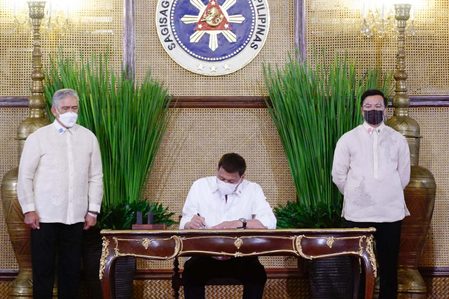
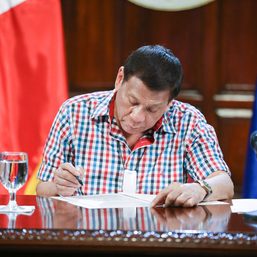
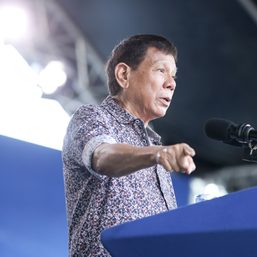
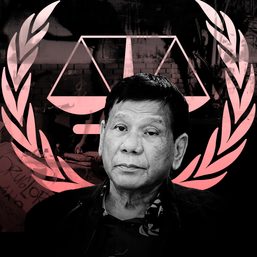
![[PODCAST] Seat of Power: Jess Dureza on how Duterte leads the Cabinet](https://www.rappler.com/tachyon/2021/07/seat-of-power-podcast-artwork-final-14.jpg?resize=257%2C257&crop_strategy=attention)


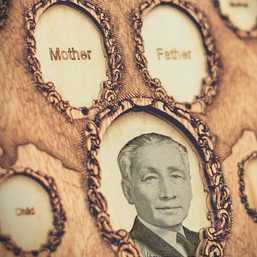
![[EDITORIAL] Marcos, bakit mo kasama ang buong barangay sa Davos?](https://www.rappler.com/tachyon/2023/01/animated-marcos-davos-world-economic-forum-carousel.jpg?resize=257%2C257&crop_strategy=attention)
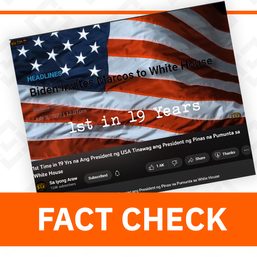
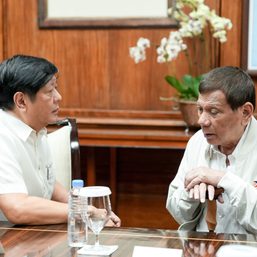
![[The Slingshot] Alden Delvo’s birthday](https://www.rappler.com/tachyon/2024/04/tl-alden-delvo-birthday.jpg?resize=257%2C257&crop=263px%2C0px%2C720px%2C720px)
![[EDITORIAL] Ang low-intensity warfare ni Marcos kung saan attack dog na ang First Lady](https://www.rappler.com/tachyon/2024/04/animated-liza-marcos-sara-duterte-feud-carousel.jpg?resize=257%2C257&crop=294px%2C0px%2C720px%2C720px)
![[Newsstand] Duterte vs Marcos: A rift impossible to bridge, a wound impossible to heal](https://www.rappler.com/tachyon/2024/04/duterte-marcos-rift-apr-20-2024.jpg?resize=257%2C257&crop=278px%2C0px%2C720px%2C720px)

There are no comments yet. Add your comment to start the conversation.